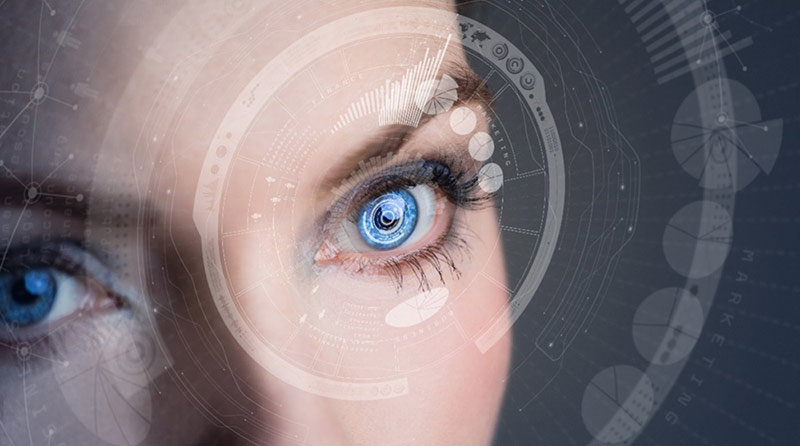By Linda Conlin, Pro to Pro Managing Editor

A contact lens that monitors intraocular pressure (IOP) and delivers a drug for IOP control is on the horizon. It’s a theranostic smart contact lens. 2016 saw Sensimed’s Triggerfish contact lens sensor, a diagnostic lens designed to monitor intraocular pressure (IOP) fluctuations continuously for 24 hours in an ambulatory setting, receive FDA approval. And in 2022, Acuvue Theravision with Ketotifen became the first FDA-approved therapeutic, medication-releasing contact lens for patients who need vision correction and itchy eye relief. Soon, smart contact lenses with both diagnostic and therapeutic capabilities may be available.
A team of researchers at Pohang University of Science and Technology in Korea developed a contact lens that integrated an IOP sensor with a flexible drug delivery system for on-demand delivery of timolol for IOP control. In treating glaucoma, it is important to monitor continuous IOP changes in real-time and deliver drugs in response to IOP fluctuations. The theranostic smart contact lens is comprised of a gold hollow nanowire-based IOP sensor, a flexible drug delivery system, wireless circuits, and an ultra-low power application-specific integrated circuit chip. (Kim, Tae Yeon et al. “Wireless theranostic smart contact lens for monitoring and control of intraocular pressure in glaucoma.” Nature communications vol. 13,1 6801. 10 Nov. 2022, doi:10.1038/s41467-022-34597-8)
The researchers successfully demonstrated that the theranostic smart contact lens enabled IOP measurement in real-time and the appropriate amount of drug release to match the degree of IOP in rabbits with induced glaucoma. Smart contact lenses use sensors surrounded by an ultra-soft insulating film to respond to changes in IOP. When the sensors detect an increase in pressure in the eye, they send an electrical signal that triggers the lens to deliver timolol anti-glaucoma medication. The medication is stored in a hydrogel layer within the lens and reduces IOP by increasing the amount of fluid that drains from the eye. While not yet tested on humans, this new lens is expected to provide a personalized glaucoma treatment with maximum efficacy and minimal side effects. In addition, the feedback system would be applicable to various wearable devices other than smart contact lenses.
But wait, there’s more! Multifunctional contact lens (MCL) sensors are being introduced to monitor at least two indicators at the same time. Kim et al. developed an MCL sensor to monitor glucose and IOP simultaneously. And Han et al. developed a sensor system that integrated glucose and dry eye sensors into a single unit. In another MCL, Guo et al. proposed a smart contact lens with a photodetector for receiving optical data, a glucose sensor for tracking blood sugar levels directly from tear fluid, and a temperature sensor for spotting potential corneal diseases in an integrated contact lens system. While the research and development for these devices have a long way to go, you can be sure that there’ll be something new in contact lenses nearly every day!












